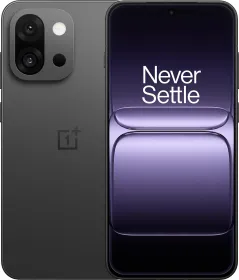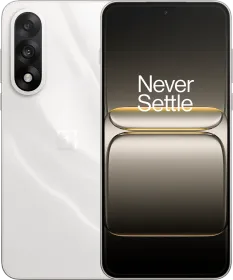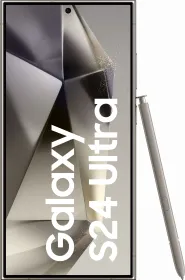With the OnePlus 13 going global today, Indian consumers looking for a flagship now have two options (before the Galaxy S25 series comes out). Between the OnePlus 13 and the Pixel 9, there are quite a lot of differences, including dimensions, screen size, processing power, cameras, battery capacity, and software experience. Given that you’ll be spending a decent amount on these flagships, you should know about these differences, as they’ll help you make an informed purchase decision.
OnePlus 13 vs. Pixel 9: Design

Dimensions
- OnePlus 13: 162.9 x 76.5 x 8.5 mm (glass back) or 8.9 mm (leather back); 213 grams (glass) or 210 grams (leather)
- Pixel 9: 152.8 mm x 72 mm x 8.5 mm; 198 grams
Purely from a design perspective, the OnePlus 13 and Pixel 9 are two very different smartphones. Both brands have found their signature design and remain committed to it with their new models.
The circular camera module on the OnePlus 13, for instance, is something that the brand has retained from the previous models. Besides, the glass back, aluminum frame, or symmetrical bezels on the front are also common.

The Pixel 9, on the other hand, features the iconic horizontal camera visor, which ends a few millimeters from the edge instead of running from one edge to the other on the older models. The phone features a polished glass back with a metal frame on the back, and on the front, there’s a punch-hole screen.
Water Resistance
Globally, the OnePlus 13 ships with two IP ratings: IP68 and IP69. On the other hand, the Pixel 9 has an official IP68 dust and water resistance.
Colors
- OnePlus 13: White, Black, Blue
- Pixel 9: Peony, Wintergreen, Porcelain, Obsidian
Also Read: Vivo Y29 5G Vs. Realme 14x 5G: Which Is The Better Entry-Level Smartphone Under Rs. 15,000?
OnePlus 13 vs. Pixel 9: Display


Out of the box, the OnePlus 13 flaunts a 6.82-inch screen with a pixel density of 510 ppi and a variable refresh rate (1-120Hz). The peak brightness supported by the phone is 1,600 nits in HBM mode and 4,500 nits of local peak brightness.
The phone covers 100% of the DCI-P3 color gamut and supports always-on functionality. Further, it also offers low-frequency flicker, an eye protection feature that’s enabled by default.
In comparison, the Pixel 9 has a slightly smaller 6.3-inch Actua screen with a pixel density of 422 ppi and a variable refresh rate (60-120Hz). The phone supports 1,800 nits of peak brightness in HDR mode and 2,700 nits of local peak brightness.
To protect the screen against scratches and drops, the phone features Corning’s Gorilla Glass Victus 2 cover glass. Further, the Pixel 9 supports full 24-bit depth for 16 million colors.
Also Read: Redmi Note 14 Pro+ vs. Vivo V40 5G: Which Is The Better Mid-Range Smartphone?
OnePlus 13 vs. Pixel 9: Performance

Under the hood, the OnePlus 13 features a Snapdragon 8 Elite (3nm) SoC. The chipset features two 4.32GHz prime cores and six 3.53GHz performance cores. Alongside the capable CPU, the chipset comes with the Adreno 830 GPU. In addition, the chipset supports on-device Gemini Nano (multimodal).
The chipset is based on TSMC’s second-generation 3nm fabrication technology, which makes it exceptionally efficient. It runs alongside up to 24GB of LPDDR5X RAM and up to 1TB of UFS 4.0 storage. In India, the company could release two variants: 12/256 GB and 16/512 GB.
As tested on the Realme GT 7 Pro (review), the processor scores around 2.7 million points on the AnTuTu 10 benchmark and 3,217/9,509 points on the GeekBench 6 benchmark.

On the other side of the fence, the Google Pixel 9 (review) features the Tensor G4 SoC, which consists of a 3.1GHz prime core, three 2.6GHz performance cores, and four 1.92GHz efficient cores. As opposed to Snapdragon 8 Elite, the Tensor G4 is based on Samsung’s 4nm fabrication technology. Even so, the Tensor G4 can run Gemini Nano (multimodal) entirely on the device.
In India, Google sells the device with 12GB of RAM and 256GB of storage. Even though the processor scores around 1.0 million points on the AnTuTu 10 benchmark and 1,579/3,787 points on the GeekBench 6 benchmark, Google has clarified that the processor is optimized for AI features and day-to-day tasks that users perform.
Moreover, it is the OnePlus 13 that provides higher processing power, which should become evident when playing video games, editing videos, or running multiple apps at once. Further, the presence of a vapor chamber on the OnePlus 13 makes it the better phone for prolonged gaming.
Also Read: iQOO 13 vs. Oppo Find X8: How Do The Latest Android Flagships Compare?
OnePlus 13 vs. Pixel 9: Cameras

OnePlus 13 Camera Configuration
- 50MP (f/1.6, 23mm) Sony LYT808 sensor with optical image stabilization
- 50MP (f/2.6, 73mm) periscope sensor with a 3x optical zoom lens (with optical image stabilization)
- 50MP (f/2.0, 15mm) ultrawide sensor with a 120-degree field of view; doubles as a macro shooter
- 32MP (f/2.4) selfie sensor with a 21mm field of view
The additional camera features include 8K video recording at 30 fps, 4K video recording at 60 fps (both from the front and the rear camera), and the Hasselblad Master Imaging algorithm. The camera also provides Hasselblad Portrait modes and Live Photos, among others. With the telephoto lens, the camera can go all the way up to 30x.
Pixel 9 Camera Configuration

- 50MP (f/1.7, 25mm) primary sensor with optical image stabilization
- 48MP (f/1.7) ultrawide sensor with a 123-degree field of view
- 10.5MP (f/2.2) ultrawide selfie shooter
Google offers plenty of camera-related features on the Pixel 9 series, including Super Res Zoom (up to 8x), Macro Focus, Face Unblur, Action Pan, Audio Magic Eraser, and popular AI-based features like Magic Editor, Magic Eraser, Best Take, and Photo Unblur. The phone supports 4K video recording at 60 fps.
Also Read: Oppo Find X8 vs. iPhone 16: Which Is The Better Camera Phone Under Rs. 70,000?
OnePlus 13 vs. Pixel 9: Software Experience


The OnePlus 13 runs on the OxygenOS 15, based on Android 15. With a Control Center revamp, the operating system also offers better lock screen customization, Dynamic Island-like notifications, and other performance-related improvements. However, unlike the Pixel (or the latest Samsung flagships), the phone is expected to get four years of Android updates and one additional year of security fixes.
The Pixel 9, on the other hand, was the first Google handset to ship with an older Android version (Android 14) at launch. However, at present, the device has received the Android 15 update. The operating system update comes with a lot of security and safety features, including Scam Detection, Live Threat Detection, etc. Then, there are a couple of other tweaks, including app pairs, redesigned volume controls, predictive back gestures, satellite connectivity, etc. In addition, the phone will get up to seven years of major Android updates.
OnePlus 13 vs. Pixel 9: Battery Life And Charging Speed


The OnePlus 13 has a 6,000 mAh battery that supports 100W wired charging, 50W wireless charging, and 10W reverse wireless charging.
In comparison, the Pixel 9 has a smaller 4,700 mAh battery that charges up to 55% in about 30 minutes using the company’s 45W USB-C charger. The phone also supports wireless charging (Qi-certified) up to 15W. Even so, the phone has an Extreme Battery Saver Mode that extends the battery life up to 1oo hours.
Also Read: Xiaomi 15 Pro vs. vivo X200 Pro: Full Specs Comparison Between The New-Age Flagships
OnePlus 13 vs. Pixel 9: Connectivity

Regarding connectivity options, the OnePlus 13 supports Wi-Fi 7 (which not be available in India), Bluetooth v5.4 (A2DP, LE, aptX HD, LHDC 5), dual-frequency GPS, NFC, an IR blaster, and a USB Type-C 3.2 port.
The Pixel 9 also supports Wi-Fi 7 globally, ships with Bluetooth v5.3 (A2DP, LE, aptX HD), and features dual-band GPS, NFC, and a USB Type-C 3.2 port.
OnePlus 13 vs. Pixel 9: Price And Conclusion

OnePlus 13 Price
- OnePlus 13 (12GB + 256GB): Rs. 70,000 (both the storage variant and price are based on a leak from an Indian tipster)
- OnePlus 13 (16GB + 512GB): Rs. 80,000 (again, these are speculative prices)
Pixel 9 Price

- Pixel 9 (12GB + 256GB): Rs. 79,999
There’s a clear distinction between the Android flagships. While the OnePlus 13 offers more processing prowess, the Pixel 9 tips the scale in its favor with its excellent camera system and image processing.
If you want a phone with a bigger screen and a massive battery, get the OnePlus 13, and you shouldn’t regret your decision (given the company works on the issues that have surfaced in the past). Further, the Snapdragon 8 Elite offers impressive performance for handling almost everything you can throw at it.
However, if you’re a photography enthusiast, the Pixel 9 could be a better choice for you. The phone also provides better software support (for seven years). Further, you’d be among the first to receive new Android features via quarterly Pixel drops.
You can follow Smartprix on Twitter, Facebook, Instagram, and Google News. Visit smartprix.com for the latest tech and auto news, reviews, and guides.
































